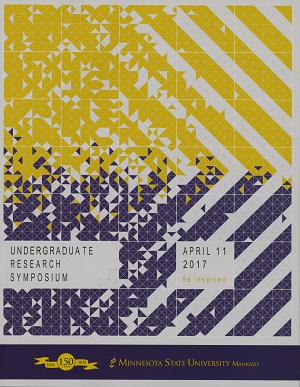Genesis of the Magenta Zone, NorthMet Copper-Nickel-PGE Deposit, Minnesota
Location
CSU Ballroom
Start Date
11-4-2017 10:00 AM
End Date
11-4-2017 11:30 AM
Student's Major
Chemistry and Geology
Student's College
Science, Engineering and Technology
Mentor's Name
Steven Losh
Mentor's Department
Chemistry and Geology
Mentor's College
Science, Engineering and Technology
Description
The Magenta Zone is a 50-million ton body of economically-significant sulfide mineralization located within the NorthMet Copper-Nickel-Platinum group element deposit in northeastern Minnesota. The magenta zone is of particular interest because it does not follow the normal pattern of mineralization currently known to form in this deposit, which has been accepted to be of magmatic origin. Core samples were obtained from PolyMet and were sent out for processing into thin sections and for geochemical analysis. Thin sections were analyzed using thin section petrography and scanning electron microscopy to identify rock type, minerals present and textures present that may be indicative of how the sulfide grains formed. It is immediately apparent upon basic inspection of the magenta zone thin sections that the rocks have been subjected to varying degrees of hydrothermal alteration forming alteration minerals such as chlorite, sericite, serpentine and talc that were not present in non-magenta zone rocks. Sulfide grains were found to have both magmatic and alteration textures, with grains surrounded by alteration minerals and grain boundaries that were jagged, suggesting that they were not in equilibrium with the surrounding minerals they formed. Geochemical analysis also showed interesting compositional relationships that require further analysis. Overall, it was found that the magenta zone mineralization formed under different conditions than what is known to occur in the deposit and is most likely the result of hydrothermal alteration. The findings of this study may help geoscientists to better understand this economically valuable deposit as well as similar deposits around the world.
Genesis of the Magenta Zone, NorthMet Copper-Nickel-PGE Deposit, Minnesota
CSU Ballroom
The Magenta Zone is a 50-million ton body of economically-significant sulfide mineralization located within the NorthMet Copper-Nickel-Platinum group element deposit in northeastern Minnesota. The magenta zone is of particular interest because it does not follow the normal pattern of mineralization currently known to form in this deposit, which has been accepted to be of magmatic origin. Core samples were obtained from PolyMet and were sent out for processing into thin sections and for geochemical analysis. Thin sections were analyzed using thin section petrography and scanning electron microscopy to identify rock type, minerals present and textures present that may be indicative of how the sulfide grains formed. It is immediately apparent upon basic inspection of the magenta zone thin sections that the rocks have been subjected to varying degrees of hydrothermal alteration forming alteration minerals such as chlorite, sericite, serpentine and talc that were not present in non-magenta zone rocks. Sulfide grains were found to have both magmatic and alteration textures, with grains surrounded by alteration minerals and grain boundaries that were jagged, suggesting that they were not in equilibrium with the surrounding minerals they formed. Geochemical analysis also showed interesting compositional relationships that require further analysis. Overall, it was found that the magenta zone mineralization formed under different conditions than what is known to occur in the deposit and is most likely the result of hydrothermal alteration. The findings of this study may help geoscientists to better understand this economically valuable deposit as well as similar deposits around the world.
Recommended Citation
Crane, Daniel and Cole Huggins. "Genesis of the Magenta Zone, NorthMet Copper-Nickel-PGE Deposit, Minnesota." Undergraduate Research Symposium, Mankato, MN, April 11, 2017.
https://cornerstone.lib.mnsu.edu/urs/2017/poster-session-A/49



